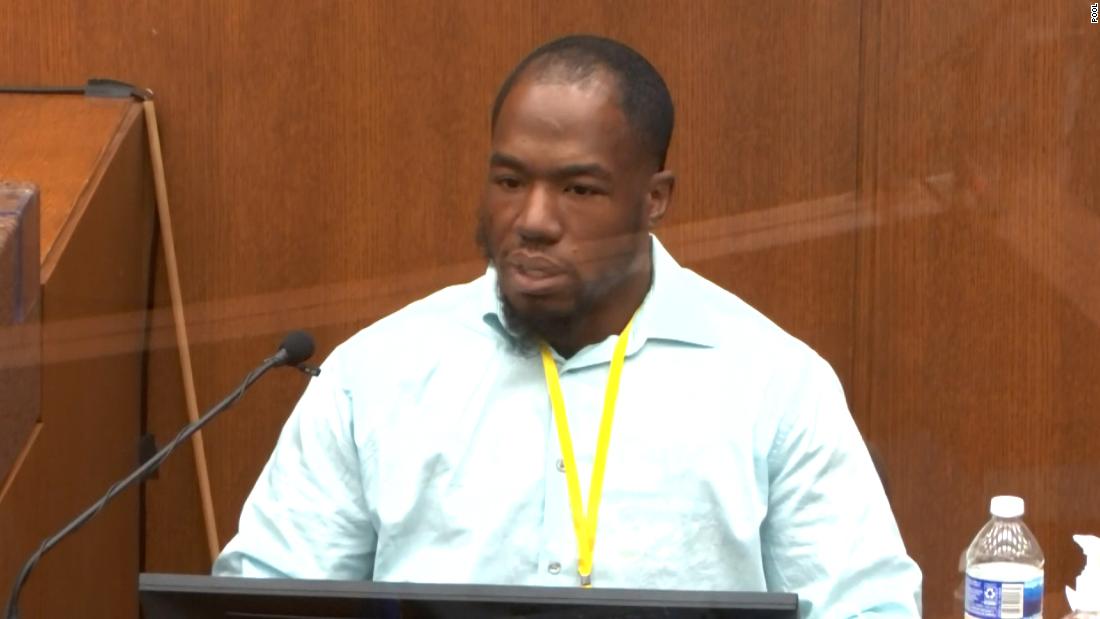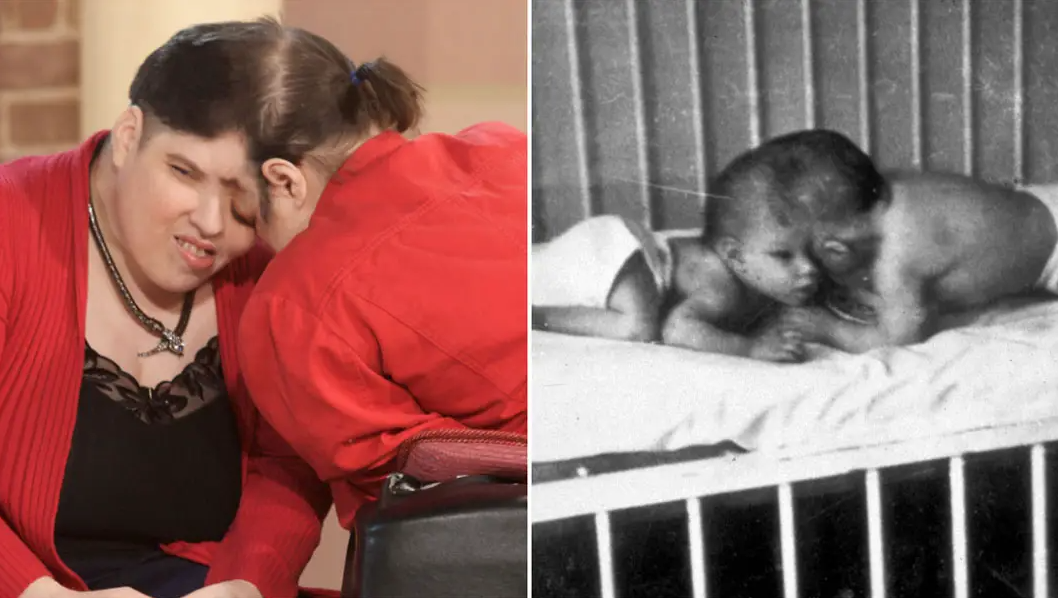Former cop knelt over Floyd 9 minutes and 29 seconds 2:31
(CNN) -
A professional wrestler was scared.
An off-duty firefighter felt desperate.
A high school student sensed a threat.
And a 9-year-old girl felt sad and a little angry.
The feelings of horror and fear were recalled Tuesday in a Minneapolis courthouse, when several people testified what it was like to see George Floyd slowly die under the knees of former police officer Derek Chauvin last May.
Six people testified on the second day of the criminal trial against Chauvin: a 9-year-old girl, three high school students, a mixed martial arts fighter and a Minneapolis firefighter.
They all came to the scene, at the Cup Foods store in Minneapolis, to buy a snack or get some fresh air.
But they would end up witnessing Floyd's last breath.
"I was sad and a little angry," said the 9-year-old.
"Because it felt like he was stopping breathing, and it was like hurting him," she explained.
Mixed martial arts fighter Donald Wynn Williams II said he was so disturbed by what he saw that he called 911 to report it.
"I called the police to report the police," he said.
"I thought I had witnessed a murder."
advertising
Minneapolis firefighter Genevieve Hansen, who went for a walk on her day off, testified that she wanted to help Floyd.
He also repeatedly asked the police to check his pulse.
They refused.
"I tried to reason calmly, I tried to be assertive, I begged and I was desperate," she testified.
"I was desperate to help," she insisted.
She also called 911 afterward to report what the police had done.
Their communication was the third such report.
In addition to Williams, a Minneapolis 911 dispatcher who saw the arrest on live video testified Monday that she alerted a police sergeant.
In addition, two of the high school students recorded videos of the arrest on their cell phones.
The videos were played in court for the jury to view.
The teenager who shot the best-known video, Darnella Frazier, testified that she saw her own black father, brothers, cousins and friends in George Floyd.
"I look at that and see how it could have been one of them," she said through tears.
“I spent nights awake apologizing to George Floyd for not doing more and not physically interacting and not saving his life.
But it's not what I should have done, it's what he should have done, "he said.
In court, she was only identified by her first name, but she has been recognized internationally for her decision to record and share the video.
The third student said she saw Chauvin dig his knee into George Floyd's neck.
He explained that at one point Chauvin pulled out his mace and started waving it as passersby asked the officers to get away from Floyd.
The testimony in Chauvin's trial comes 10 months after Floyd's death sparked a summer of protests, riots and calls for racial justice in the face of America's past and present of anti-black racism and aggressive policing.
Chauvin, 45, has pleaded not guilty to charges of willful manslaughter, manslaughter in an act eminently dangerous to others, and manslaughter.
In opening remarks Monday, prosecutor Jerry Blackwell said that Chauvin used excessive and unreasonable force when he knelt over Floyd for 9 minutes and 29 seconds, a number that differs from the 8:46 that have become a symbol of brutality. police.
Chauvin's defense accepted the new time as accurate.
This was the first day of the trial against Derek Chauvin 5:31
Blackwell played the heartbreaking video of Floyd's death and offered jurors a clear and simple case against Chauvin.
"They can believe what they see, that it is a homicide," he said.
"They can believe what they see," he emphasized.
In response, Nelson argued that the case was more complicated than just the video.
He said Chauvin was following his police training on the use of force and argued that Floyd's cause of death was a combination of drug use and pre-existing health problems.
"The use of force is not attractive, but it is a necessary component of surveillance," he said.
Witness says Chauvin made a "strangulation"
Donald Wynn Williams II said he called to report police behavior.
Williams, the mixed martial arts fighter, stated on Monday and Tuesday that he had gone fishing with his son earlier that day, May 25, 2020.
He decided to go to the Cup Foods store in Minneapolis to "get some air" after watching several captured fish suffocate and die.
When he came across Floyd's arrest nearby, he saw George Floyd gasp for air and saw his eyes roll up, "like a fish in a bag," he explained.
Relying on his own mixed martial arts experience, Williams said Chauvin "choked" Floyd and adjusted his position several times to keep pressure on George Floyd's neck.
Williams said he wanted to get Chauvin off of Floyd but did not physically intervene because former Minneapolis police officer Tou Thao was signaling him to stay away.
"I was just trying to stay professional and make sure I spoke up for Floyd's life because I felt like he was in great danger," he said.
In cross-examination, Williams acknowledged that he had repeatedly insulted Chauvin and Thao and had yelled at them even after Floyd was taken away in an ambulance.
However, he rejected defense attorney Eric Nelson's description that he had become "angry" at the scene.
I stayed professional.
I kept my composure.
You can't portray me as if I was angry, ”he said.
The situation in the courtroom
Due to the covid-19 pandemic, attendance is strictly limited within the courtroom.
The trial is being broadcast live, allowing audiences to get a glimpse of the biggest case of the Black Lives Matter era.
Only one member of Floyd's family is allowed to attend per day.
On Monday, Floyd's brother, Philonise Floyd, took that seat at court.
Philonise Floyd told CNN on Tuesday that being in the room was a "roller coaster of emotions."
“For everyone else, it was a case and a cause.
For me he was my brother, someone with whom I grew up, with whom I ate, slept in the same bed, went fishing, I saw him dance with my mother, ”she said.
Those are the things I think of when I think of my brother.
He was a protector, he was someone we could turn to when we were in trouble and needed something, "he explained.
George Floyd's brother recounts his experience being a few meters from Chauvin
His place in the courtroom was a few feet from Chauvin, who was taking notes on a large pad during the jury selection and trial.
"I have seen it.
I watched it.
I saw the reaction when the witnesses responded to the questions they were asked, ”said Philonise Floyd.
«He is there, he is fighting for his life, just as I am fighting for my brother's life.
We have seen the video.
We have facts.
They are there trying to assassinate your character.
When you don't have facts, that's what you have to do.
The willful manslaughter charge says Chauvin intentionally assaulted Floyd with his knee, causing Floyd's death unintentionally.
The involuntary manslaughter charge says that Chauvin acted with a "depraved mind, without regard for human life," and another of the involuntary manslaughter charges says that Chauvin's "culpable negligence" caused Floyd's death.
Chauvin could be convicted of all charges, some or none.
Minnesota sentencing guidelines recommend approximately 12.5 years in prison for each murder charge and approximately four years for the involuntary manslaughter charge.
Witness testimony at the trial is expected to last about four weeks.
Then the jury's deliberation will follow.



/cloudfront-eu-central-1.images.arcpublishing.com/prisa/M3XIOPNNQ5AY5FGQU74V3CCKRA.jpg)











